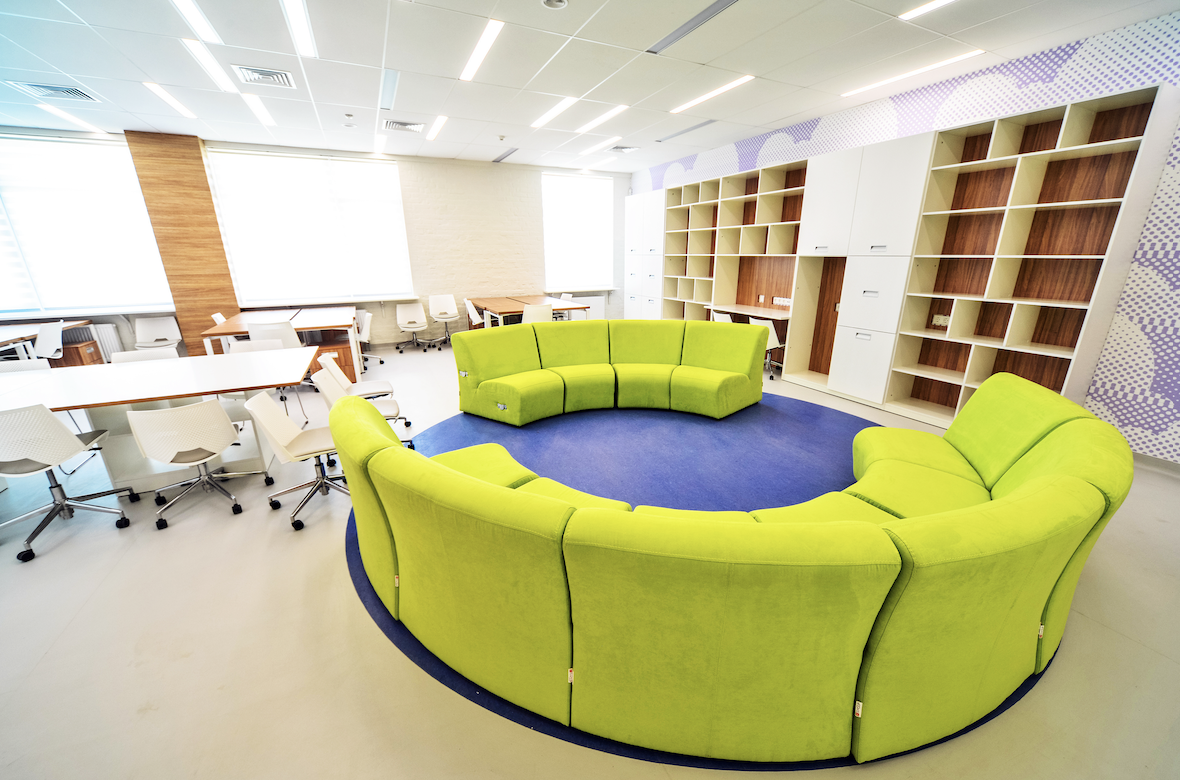As teachers who have experienced every twist and turn that COVID has thrown at K-12
schools, you’ve felt first hand the many needs that have been laid bare to the system. There
have been plenty of “asks” of teachers since March 2020 that may have left you scratching
your head – like being expected to digitize an entire curriculum with no added prep
time – wondering where your needs fit into the picture; but student learning has come
first, as it must.
Relief funding
To try to combat learning loss and to alleviate social-emotional challenges during
the pandemic, the federal government stepped up and offered support and relief when
it was needed1. How you’ve seen that support trickle down to your everyday – well,
that’s a case-by-case basis. Maybe you’ve seen programs and supports put into action
that truly have addressed some of the pressing issues that come with teaching and
learning during a pandemic. Maybe you’ve seen less than you would have liked.
Either way: knowledge is power. And now is the time to fully understand where these
funds are coming from and what your school can do with them.
Full STEAM ahead
The relief funds that have been sent down from the federal government, through states
– for our purposes, through New York State – and finally to school districts, are
powerful. State plans for use of the funds have been submitted, and “as of January
10, 2022, all states have had their plan approved”1.
Relief funds must be obligated to a specific line in the budget by September 30, 20222,
and as we all know, schools aren’t stitching budgets together at the last minute.
Instead, they tend to prep the budget the winter and spring before, with most budget
votes happening in the late spring.
That means that the more you know about COVID relief funding for your school now –
like right now – the more you can advocate for what you and your students need in
the coming years to overcome what you’ve been through as a community, in relation
to social-emotional well-being and academic losses.

Breakdown of terms & funding
Here’s a breakdown of what legislation was passed, the specific terminology that surrounds
the funds, and the actual amounts that the state has received:
| Congress passed legislation | Title of legislation | Includes | Total funds provided to states | Funds specifically allocated to New York State |
| March 2020 | CARES Act | ESSER I relief funding | $13.5 billion | $1,037,045,603 |
| December 2020 | CRRSA Act | ESSER II relief funding | $54.3 billion | $4,002,381,738 |
| March 2021 | ARPA | ESSER III relief funding | $122.7 billion | $8,988,780,836 |
CARES Act: Coronavirus Aid, Relief, and Economic Security Act
CRRSA Act: Coronavirus Response and Relief Supplemental Appropriations Act
ARPA: American Rescue Plan Act
ESSER: Elementary and Secondary School Emergency Relief fund
Source1
Don’t forget about the past
New York, and all states, received funds “based on the same proportion that each state
received under ESEA”1 – as you can see, to really understand how these funds are allowed to function and
be disbursed to schools, you have to backtrack a bit to understand some older education
legislation.
The federal government wanted to offer a wide variety of authorized uses for these
funds, so they basically bundled the majority of past education legislation together
and said: if we said you could use money for a specific purpose back then…you can
do the same now.
That means that school districts can allocate funds from ESSER to any uses as described
under the following legislation from as far back as 1965:
|
Congress passed legislation (original date) |
Title of act with acronym |
Purpose of act |
Authorized uses of funds |
|
1965 |
Elementary and Secondary Education Act (ESEA)3 |
To increase the quality of learning outcomes and combat learning challenges related to poverty. Establishes Title I. |
|
|
1975 |
Individuals with Disabilities Education Act (IDEA) |
“To support special education and related service programming for children and youth with disabilities.”4 |
|
|
1998 |
Adult Education and Family Literacy Act (AEFLA)5 |
To support educational services for adults whose education was interrupted or not possible during childhood to ensure literacy and math skills in the adult population. |
|
|
2006 |
Carl D. Perkins Career and Technical Education Act (Perkins IV)6 |
To improve the quality and availability of technical education. |
|
The broad range of uses of funds listed in the far right column above have trickled
down as authorized uses for all ESSER funds. But – as you most certainly would have
noticed – none of these distinctions are specific to COVID-19.
Uses of funds specific to the COVID crisis
As a teacher who’s been through it these past two years, you and your colleagues know
better than anyone else what classrooms and students need most. And in addition to
the pre-existing uses listed above, there are four categories of funding available
that are more specific to the havoc that COVID wreaked on our system.
COVID-19 related preparedness and operationsIn mid-March of 2020 when concerns began to surface, I remember an Ops team member
dropping off three bottles of hand sanitizer to my classroom. That lasted about two
days, as you can imagine. Funds in this area provide support for the infrastructure
and tools your school needs to continue to keep everyone safe day-to-day.
Providing social-emotional supportWhile remote and hybrid learning settings were absolutely necessary for everyone’s
safety at times since March 2020, it certainly brought new challenges to our kids.
Some students really loved the format and were able to focus better…but many more
just felt alone. Feelings of isolation and fear are real, and funds in this area can
go towards programming and resources around social-emotional support or physical spaces
that can invite students to safely relax again.

Preparing for long-term school closureSchools weren’t ready for what hit the country. Every educator did an incredible job
responding to the crisis, but it was mayhem (at least in my corner). This section
provides funding to beef up educational technology resources and go 1-to-1 in districts
that aren’t yet there, to be ready for long-term closures with the added bonus of
updating necessary tech infrastructure.
Combatting learning lossIf you’ve seen specific academic areas where students struggled the most during remote
or hybrid learning and have resources or programs in mind that you’d like to use to
combat those struggles — this is the place to fit them in.
A great, detailed resource to gain inspiration about how to most effectively invest
funding for student outcomes and teacher retention is Demco’s eBook on the topic7.

A further note on COVID-19 testing
Funding for regular COVID-19 testing is authorized under ESSER III in ARPA, so your
school can partner with a testing vendor for regular COVID-19 testing. The CDC is
calling this “Test-to-Stay”8, with the idea being that positive results can be mitigated if caught early and often,
so that the large majority of students and staff can stay in school for the large
majority of the school year. Right now, there are over forty-five groups in the country
who can serve as partners to regular testing in your school, and the funds are available.
Other states have received funding for regular testing through Epidemiology Laboratory
Capacity (ELC) Reopening Schools funds9, but for New York, the main source of funding appears to be ESSER III.
Teaching and learning through the pandemic has been a challenge to the mind, heart,
and body. Educators have depended on one another and their families to help see them
through the challenges, and students have responded the way children always do – in
their individual, specific ways, displaying their needs through their behavior. Some
students, in my experience, put their best faces on and “logged on” ready to learn
each day. Others struggled to get out of bed, and some refused to show their faces
or speak over Zoom – a silent refusal to engage that left us tearing our hair out.
There are things that we’d never take with us into the future, but there are also
new ways of thinking and being that grew out of the hardship. Hopefully at your school,
with your voice in the mix, the necessary relief funds that have been provided can
be used to the utmost effectiveness for students – and for teachers.
CTLC can help! For guidance and support in programming and professional development,
contact us atctlc@stonybrook.edu.
________________________________
References
1 NCSL. (2022, January 10). Elementary and Secondary School Emergency Relief Fund Tracker. National Conference of State Legislatures.
2 Larson, K. (2021, June 15). Making the most of ESSER funds. Demco Ideas & Inspiration.
3 Hanna, J. (2005, August 18). The Elementary and Secondary Education Act: 40 Years Later. Harvard Graduate School of Education News & Events.
4 U.S. Department of Education. (n.d.). About IDEA. Ed.Gov.
5 EveryCRSReport. (2013, April 8). Adult Education and Family Literacy Act (AEFLA): A Primer. Every CRS Report.
6 PCRN. (n.d.). Perkins IV. Perkins Collaborative Resource Network.
7Optimizing ESSER Funds: Inspiration for School and District Leaders. (n.d.). Demco Inspiration & Ideas.
8 New York State Department of Health. (2021, December 23). Test to Stay (TTS) Update. Coronavirus Health NY Gov.
9 Epidemiology Laboratory Capacity (ELC) Reopening Schools. (n.d.). Open & Safe Schools.
Guidance & Technical Assistance for Funding Recipients.

